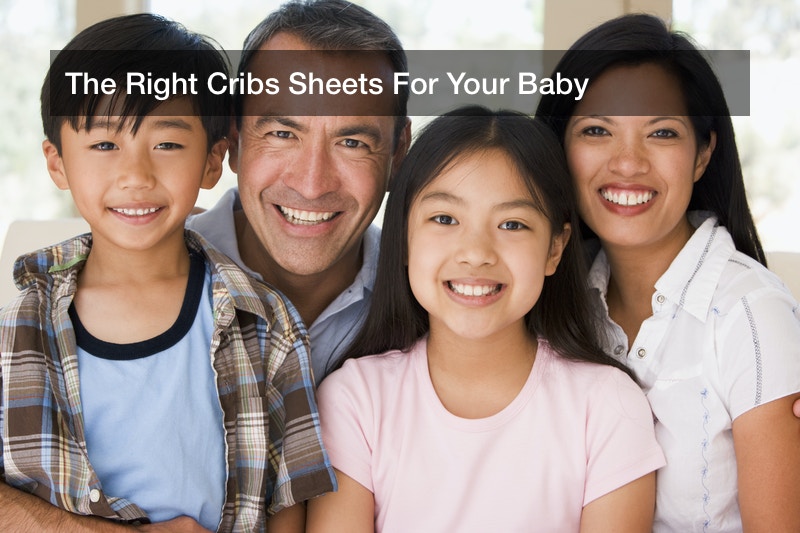
Everyone needs somewhere to sleep, and a bedding setup will be tailored to the person, or people, who are getting sleep. All sorts of beds, ranging from twin size to king size, may be used for one or two people for a good night’s rest. These beds can be found at many furniture shops. But what about an infant? It hardly makes sense to tuck an infant into a queen size bed. Rather, until they are small children, babies are put to rest in a crib, and any expecting parents will be on the lookout for a crib. Expecting parents will have a lot to juggle for the upcoming member of their family, and this includes the bedding setup. Not only should the crib be secure, but it should also have baby-safe paint with no fumes or VOCs in it. Finally, the bedding itself should be safe for a baby, and a fitted crib sheet is a great place to start. A fitted crib sheet can be found at many retailers for babies, along with other materials such as baby sheets, a hypoallergenic baby crib sheet, and more. New parents will soon learn that certain bedding arrangements are in fact hazardous for a baby, who will have minimal ability to protect him or herself. A proper fitted crib sheet is a good start. What is there to know?
Babies and Sheets
Not any blanket or sheet will do for a newborn. The sheets will have a certain thread count or higher, and some babies with allergies or other issues may need hypoallergenic bed sheets put in place. The thread count of any sheet, put simply, describes the number of threads that are woven into one square inch of fabric. The thread count may describe the number of horizontal threads, or the weft, or the vertical threads, the warp. Extra threads may even be woven into the weft threads to boost the thread count if so desired. Often, industry experts say that the maximum thread count in one square inch of fabric of 500 to 600, but fabrics with higher thread counts are sometimes possible. For a lighter sheet, a thread count of 400 or so is ideal, and a thread count closer to 800 is ideal if the customer wants a thicker, softer sheet, according to industry experts. Most adults say that they are more comfortable in their beds if the sheets are freshly washed and have a clean scent, and the same may be true for small children or even babies.
Not only should the right fabric be used for a baby’s crib bedding, but the correct style, too. While adults and children sleep with a blanket over them, this arrangement is in fact hazardous for a baby. Babies are often prone to suffocation in any scenario, and this includes their crib. Baby blankets are certainly out there, but these are best used for short, supervised naps or while the baby is awake. Baby blankets are often best used when the baby is awake, not asleep. In that case, what does a baby’ sleep arrangement actually look like?
A safe and comfortable night’s rest is surprisingly bare bones for a baby. The only sheets involved is a fitted crib sheet that goes over the padding on the crib’s bottom, and this sheet is impossible for the baby to get under. This is like the fitted sheet on an adult’s bed, minus the blankets or comforters on top. In fact, a fitted crib sheet is the only fabric on the crib aside from the comforter; not even a pillow is used. Even pillows can be a suffocation hazard for babies, so they are not used. The baby will sleep on the fitted sheet at night, and warmth comes from not a blanket, but the baby’s clothes. To keep warm, babies are dressed in warm clothing that covers most of their bodies, and babies may sometimes wear hats while they sleep, too. In short, a baby’s outfit acts as a wearable blanket that poses no suffocation hazard. This, when combined with a baby’s fitted sheet, makes for a safe and comfortable night’s sleep until the child is old enough for a conventional bed as a toddler.
